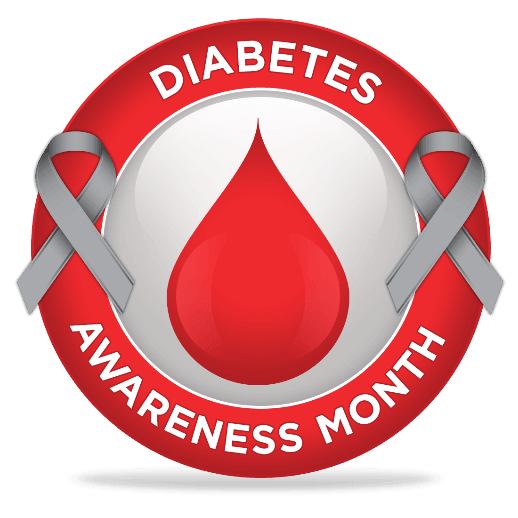November is Diabetes Awareness Month, and while I think we’re all pretty aware of what diabetes is, what you need to know is that it’s spiraling out of control in the US (and many other countries).
According to the CDC, as of 2017 over 100 million Americans (that’s nearly one out of three of us) has diabetes or pre-diabetes (elevated blood glucose). Between 1990 and 2013, US diabetes rates skyrocketed by an incredible 71 percent.
Methinks that instead of “awareness” we ought to be asking: What in the world is going on?
Why do a third of us have too much glucose in our bloodstreams and what can we do about it?
Here are the answers you need:
It starts with insulin resistance
Our typical diets are heavy on sugars and starchy carbs which cause a surge of glucose into your bloodstream upon digestion. Glucose is a very inflammatory substance, and high levels of it in your blood can be dangerous or even deadly.
Now, your pancreas knows this, so when it senses too much glucose in your blood, it releases insulin which tells your cells to absorb the glucose, thereby quickly restoring a proper blood sugar level.
If this happened only occasionally, I wouldn’t be writing this blog. But growing numbers of people are taking in excessive amounts of carbs, causing the pancreas to repeatedly secrete insulin.
Eventually your cells start to resemble a soaked sponge—they can’t absorb any more glucose, so they turn off their receptors for insulin—known as insulin resistance.
Take a look at your diet. If your 4 food groups are pasta, bread, chips and cookies, you never drink anything that isn’t sweetened, and you’re overweight, chances are excellent you have insulin resistance in the making.
Stress plays a part too!
Stress triggers the hormones adrenaline and cortisol, which in turn signal your liver to release glucose into your bloodstream, preparing you for the “fight or flight” response.
Now, if our typical stresses were only temporary or short-lived, this would not be an issue. But the problem is many of us have chronic ongoing stress, which leads to repeated influxes of glucose into your bloodstream, and the same scenario with the pancreas and insulin resistance I described above.
Our affinity for the couch doesn’t help
According to the US Department of Health and Human Services, only one out of three of us gets the recommended amount of physical activity each week, and that includes children.
Exercise increases the ratio of muscle to fat in your body. The more muscle you have, the higher your metabolism, which helps you burn up more glucose.
Plus the more muscle you have, the more responsive your body is to the effects of insulin!
Since two out of three of us apparently has an affinity for the couch (or at least a loathing for exercise), it’s no wonder that our blood glucose levels continue to rise.
Insulin is not the best answer!
One of the go-to treatments for Type 2 diabetes is insulin, but it is not the best answer.
While it’s true that when you take insulin it encourages your body to use more of the excess glucose in your bloodstream, unfortunately that glucose turns into FAT!
This is the exact opposite of a healthy treatment because a vicious cycle is created--the more weight you gain, the worse your diabetes gets and the more insulin you require, then the more weight you gain and so on.
Take control now!
The good news here is that diabetes and pre-diabetes is very PREVENTABLE, and even if they are affecting you, there is a LOT you can do to take control and turn it around!
Here’s how:
1- Eat for diabetes prevention and control
Here are some good food choices to combat elevated blood sugar levels:
- Salmon and cod: The Omega-3 essential fatty acids in fish like salmon and cod provide crucial support to your metabolism including maintaining proper insulin levels.
- Onions: Onions are rich in chromium, which is an important mineral to help regulate blood sugar.
- Tomatoes: Tomatoes are also a good source of chromium and antioxidants.
- Red and purple fruits: The anthocyanins (phytonutrients) found in fruits like cranberries, cherries and blueberries can help lower blood sugar levels.
- Leafy greens: Leafy green vegetables contain special compounds beneficial for blood sugar balance.
- Cinnamon: This spice is a potent antioxidant and helps maintain healthy blood sugar levels.
- Walnuts: Another great source of Omega-3 EFAs.
- Extra-virgin olive oil: Studies show extra-virgin olive oil can have beneficial effects on blood sugar levels.
At the same time, avoid or severely limit sugars and starchy carbs, especially soda!
2- Supplement with Turmeric
A study published in the International Journal of Endocrinology and Metabolism has shown that curcumin (the compound in turmeric that gives it the classic golden color) can reduce blood glucose levels by reducing the liver’s glucose production!
It also helps reduce inflammation from high blood sugar levels, stimulates pancreatic function, and reduces insulin resistance!
Turmeric is a spice used in Indian cooking, but unfortunately the amount you’d get from food is only a fraction of what you need.
To take advantage of this gem of Nature, check out our Optimal Turmeric Blend!
Optimal Turmeric Blend provides a soothing 750 mg. of pure organic turmeric, plus black pepper extract to help increase absorbability.
3- Get regular exercise
Yup, Sherry the drill sergeant is at it again.
Blood sugar control is yet another of the L – O – N – G list of reasons why you should get regular exercise.
Pick an activity you like—even walking is helpful—get your doctor’s OK and do it for at least 30 minutes a day, 4-5 days a week.
Trust me, your body will thank you in ways you can’t even imagine.
Now you are aware of what REALLY matters for Diabetes Awareness Month!
To your health,
Sherry Brescia











